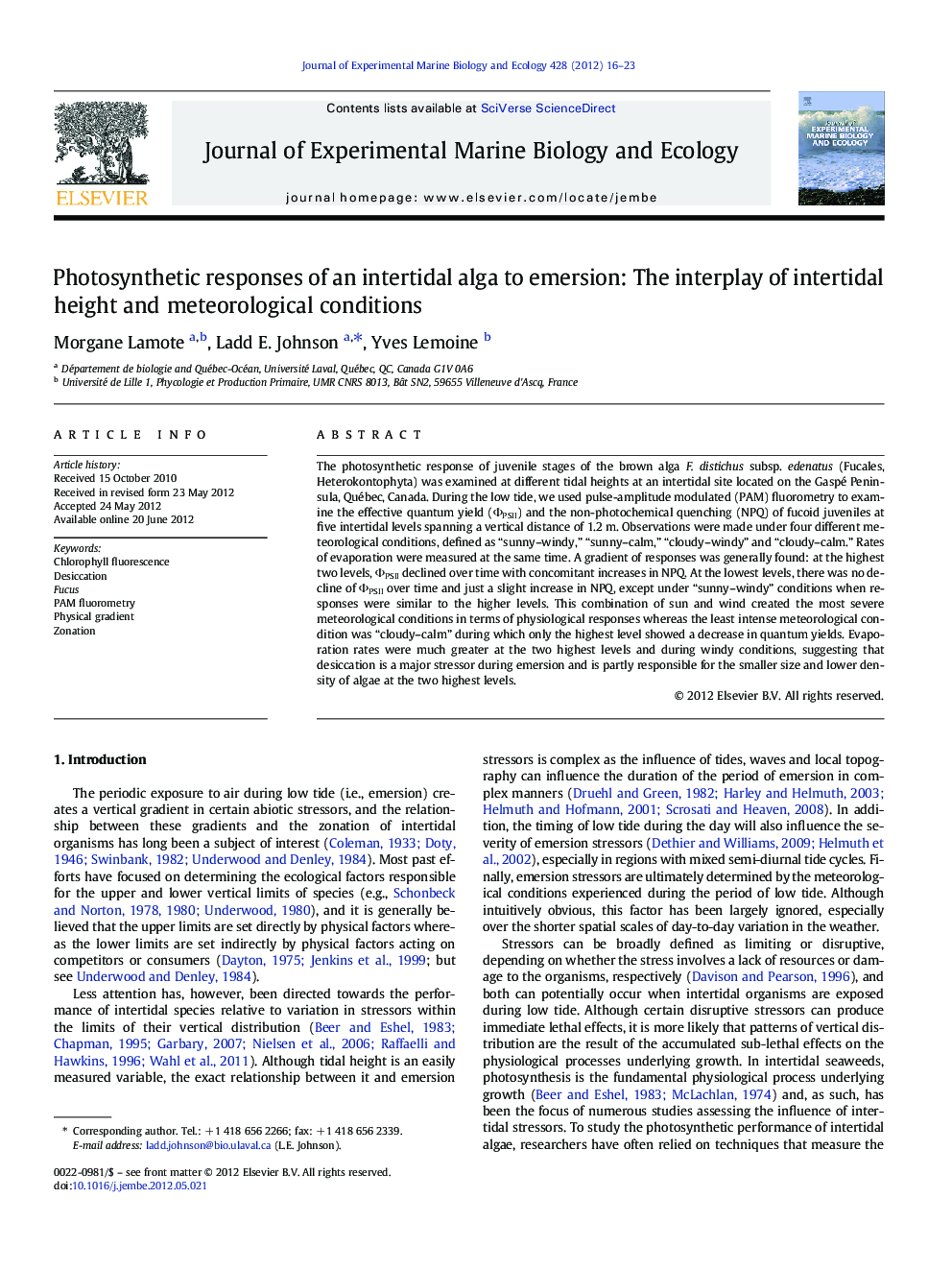| Article ID | Journal | Published Year | Pages | File Type |
|---|---|---|---|---|
| 4395991 | Journal of Experimental Marine Biology and Ecology | 2012 | 8 Pages |
The photosynthetic response of juvenile stages of the brown alga F. distichus subsp. edenatus (Fucales, Heterokontophyta) was examined at different tidal heights at an intertidal site located on the Gaspé Peninsula, Québec, Canada. During the low tide, we used pulse-amplitude modulated (PAM) fluorometry to examine the effective quantum yield (ΦPSII) and the non-photochemical quenching (NPQ) of fucoid juveniles at five intertidal levels spanning a vertical distance of 1.2 m. Observations were made under four different meteorological conditions, defined as “sunny–windy,” “sunny–calm,” “cloudy–windy” and “cloudy–calm.” Rates of evaporation were measured at the same time. A gradient of responses was generally found: at the highest two levels, ΦPSII declined over time with concomitant increases in NPQ. At the lowest levels, there was no decline of ΦPSII over time and just a slight increase in NPQ, except under “sunny–windy” conditions when responses were similar to the higher levels. This combination of sun and wind created the most severe meteorological conditions in terms of physiological responses whereas the least intense meteorological condition was “cloudy–calm” during which only the highest level showed a decrease in quantum yields. Evaporation rates were much greater at the two highest levels and during windy conditions, suggesting that desiccation is a major stressor during emersion and is partly responsible for the smaller size and lower density of algae at the two highest levels.
► Physiology of an intertidal alga varied spatio-temporally at different shore levels. ► Changes in PAM fluorometric parameters were greater at higher shore levels. ► PAM fluorometric parameters changed more under sunny and windy conditions. ► Physiological responses correlated with measured rates of evaporation. ► Demographics (density and size) corresponded with patterns of physiological stress.
